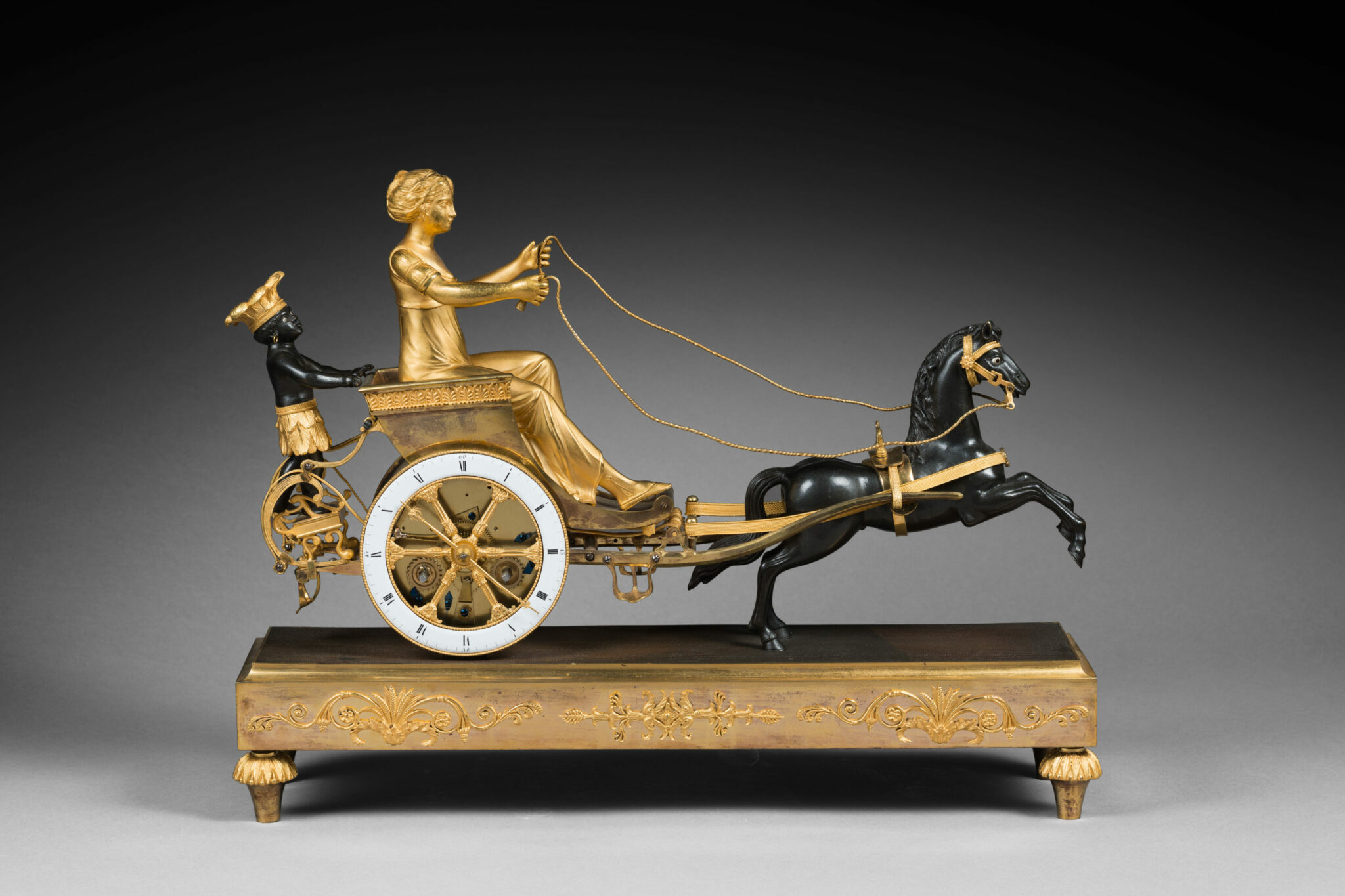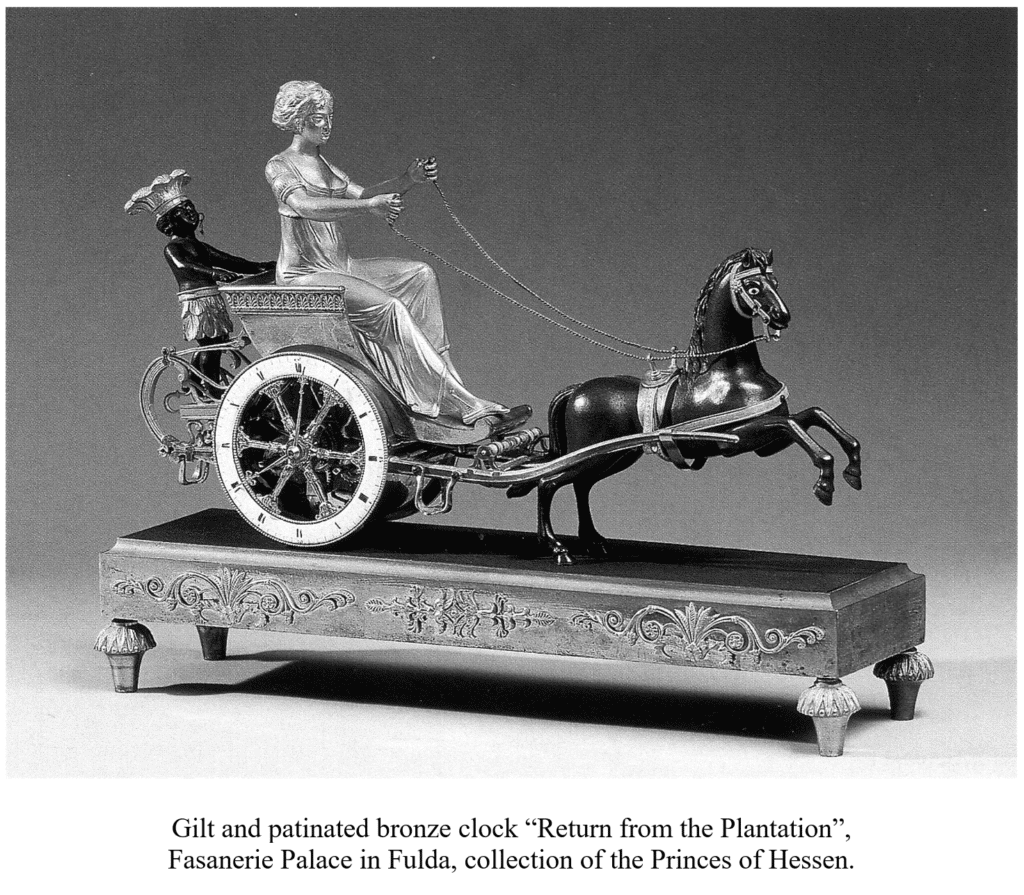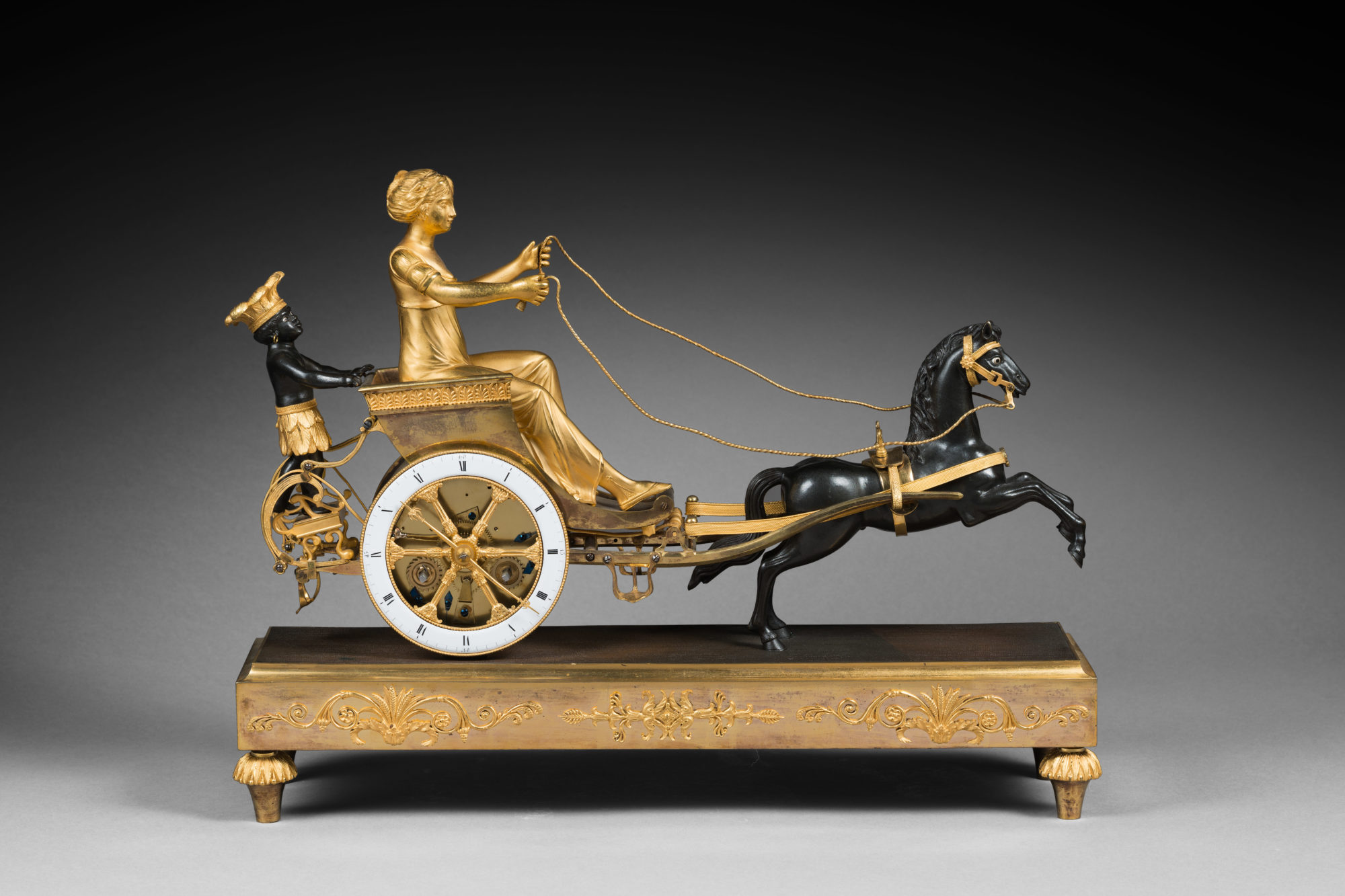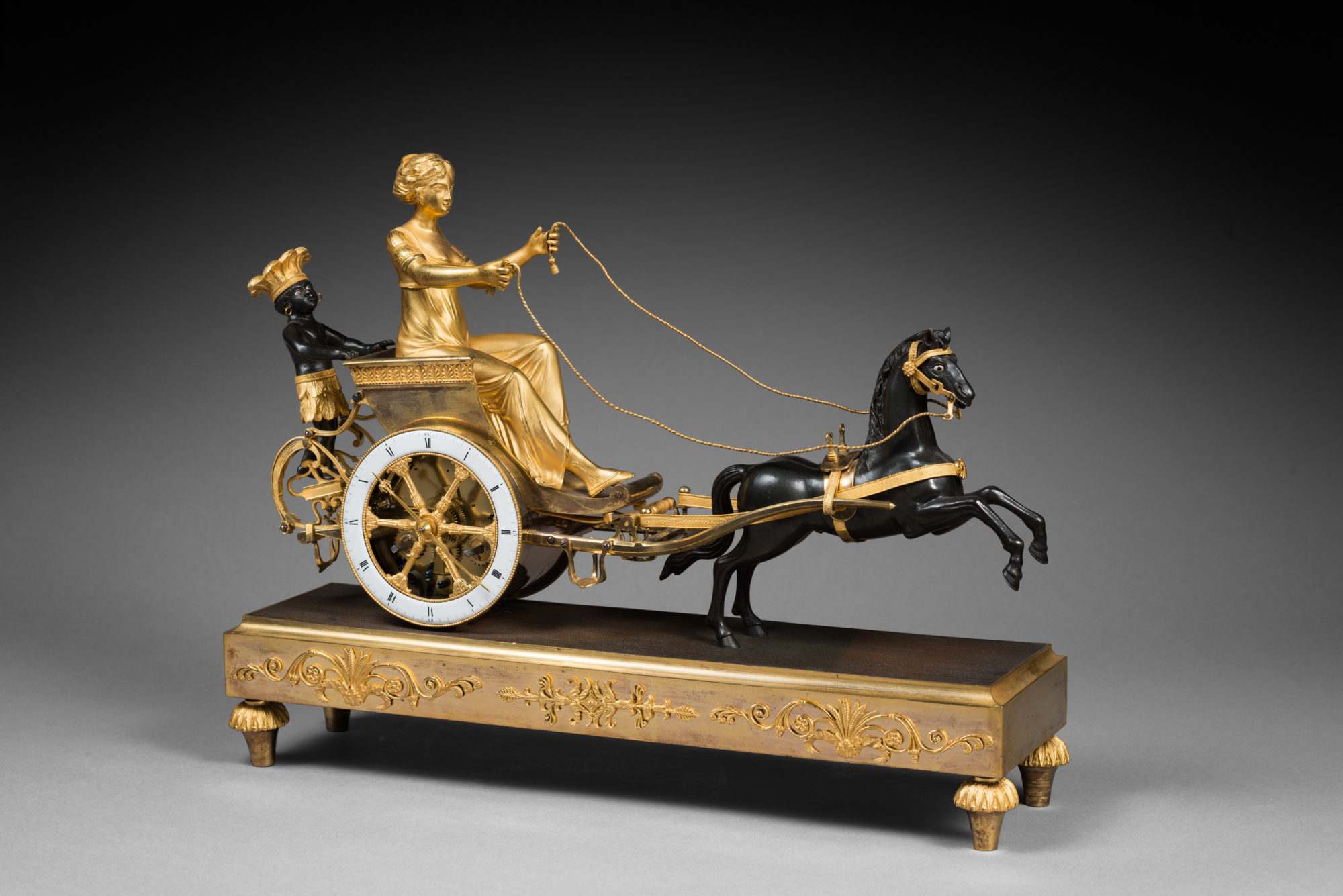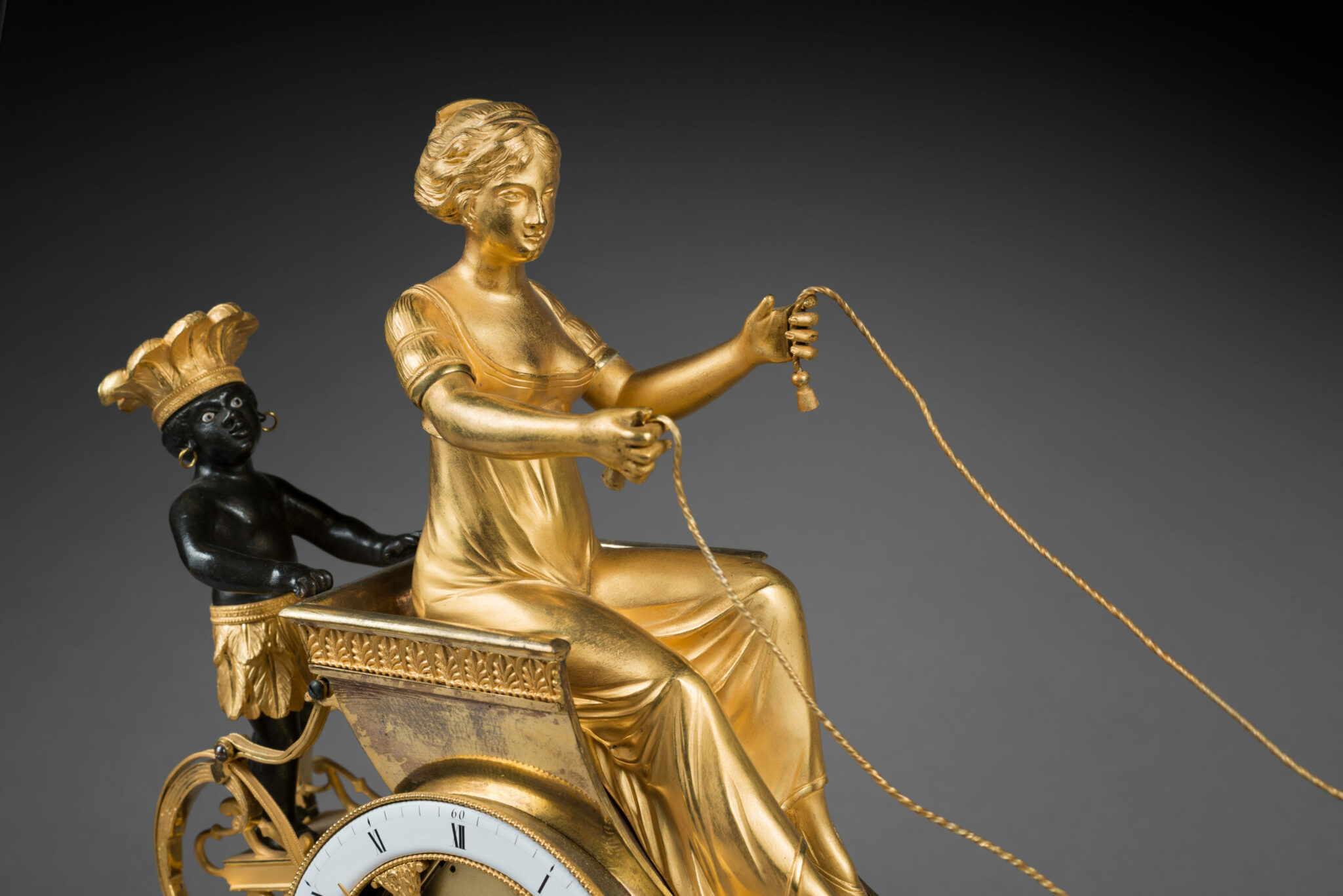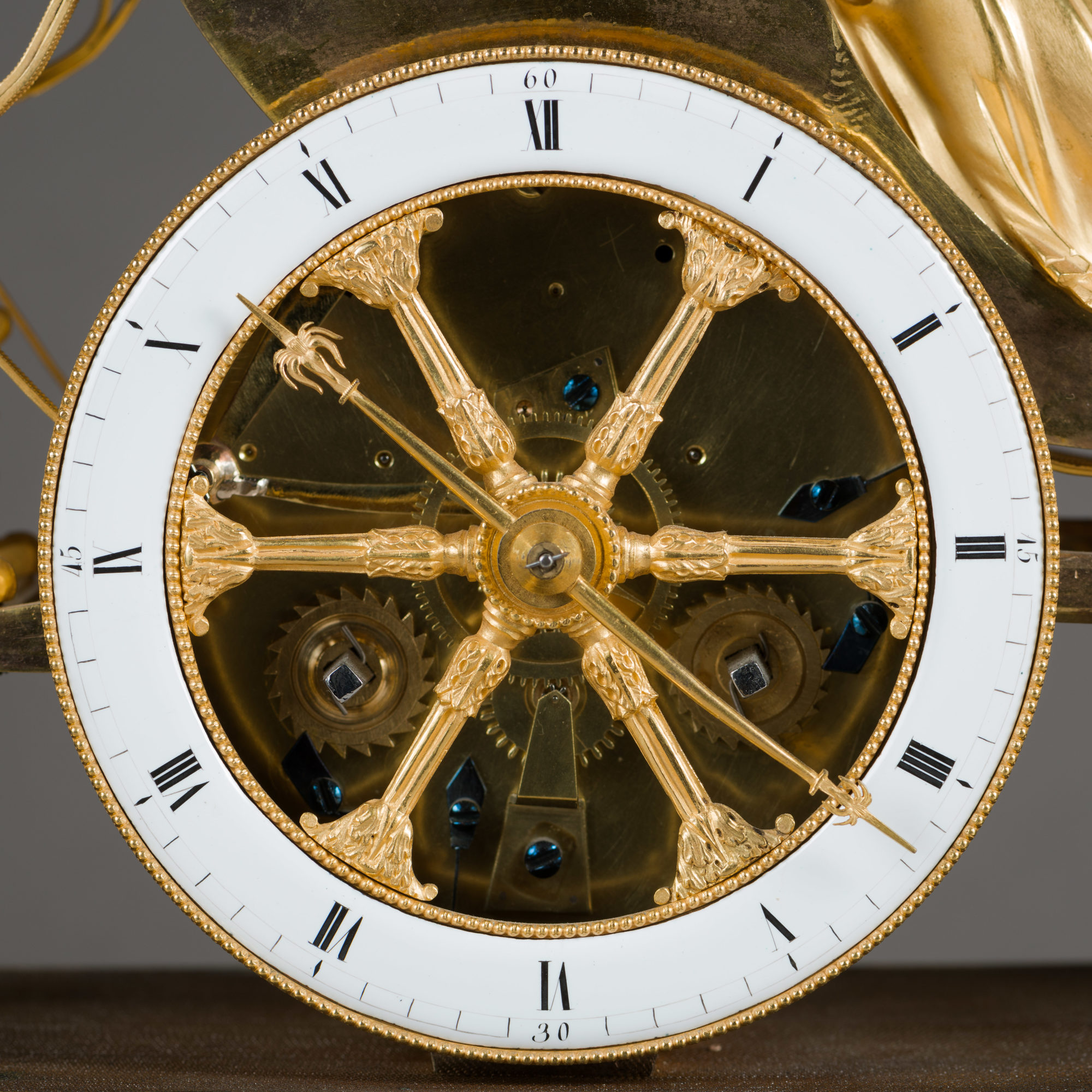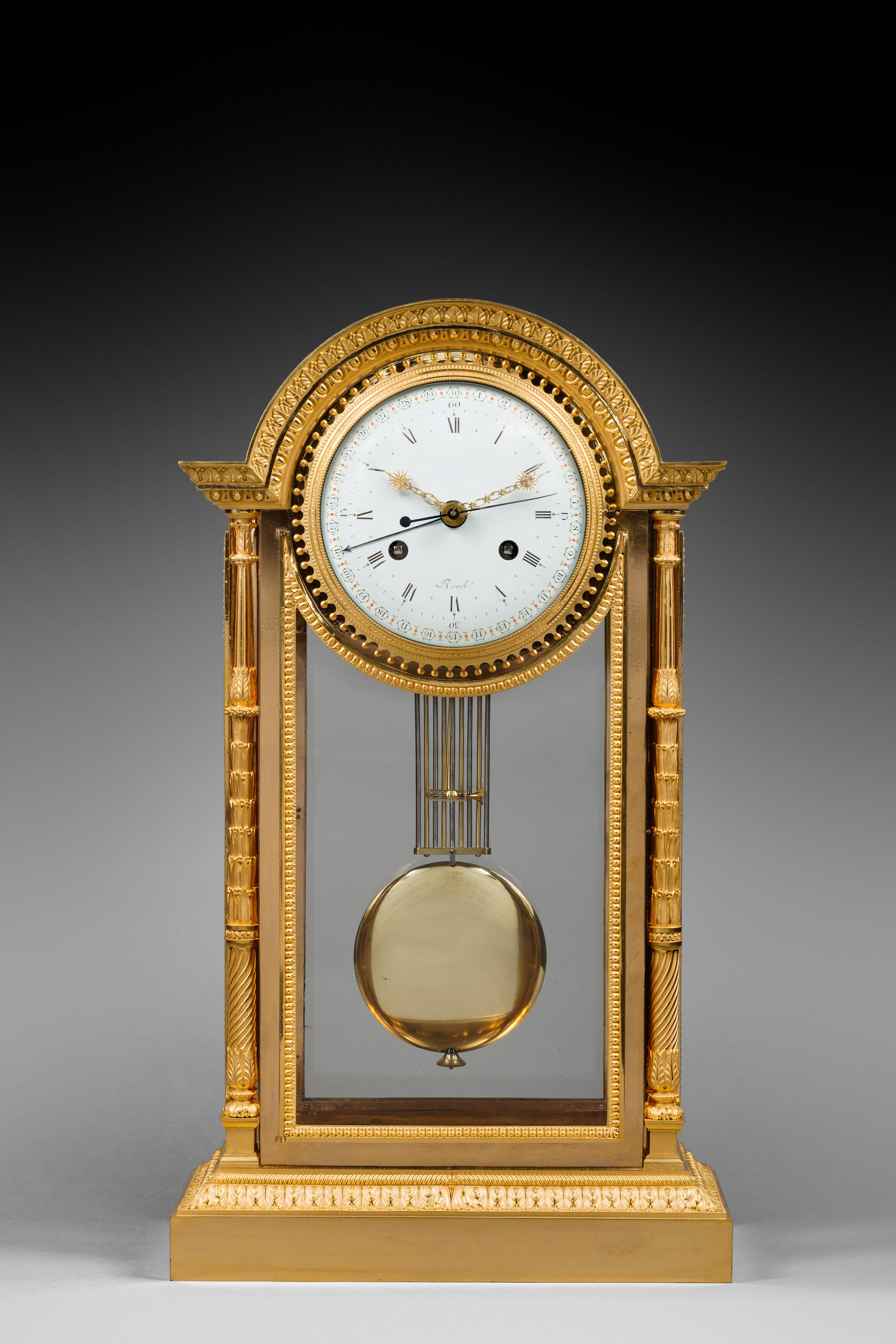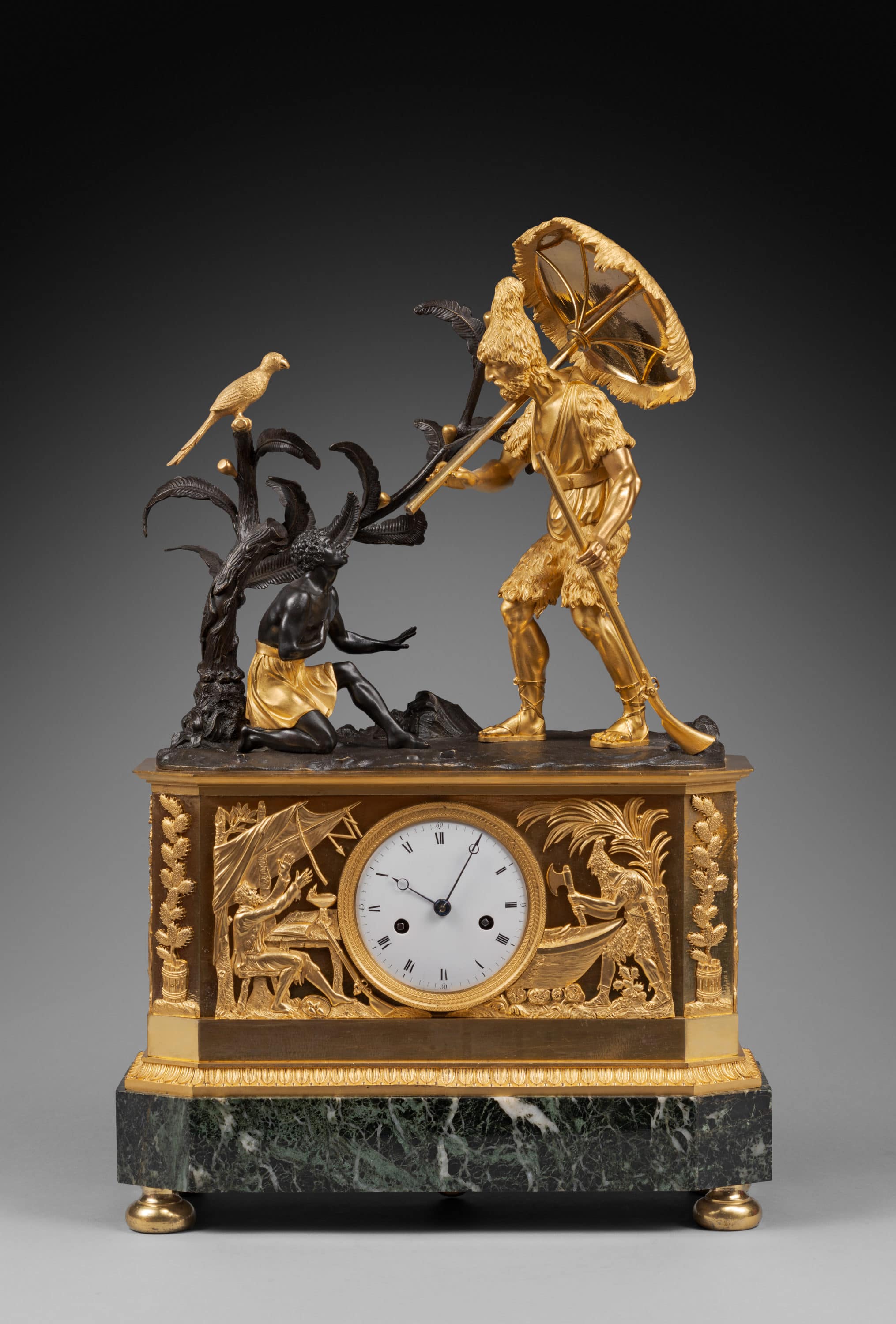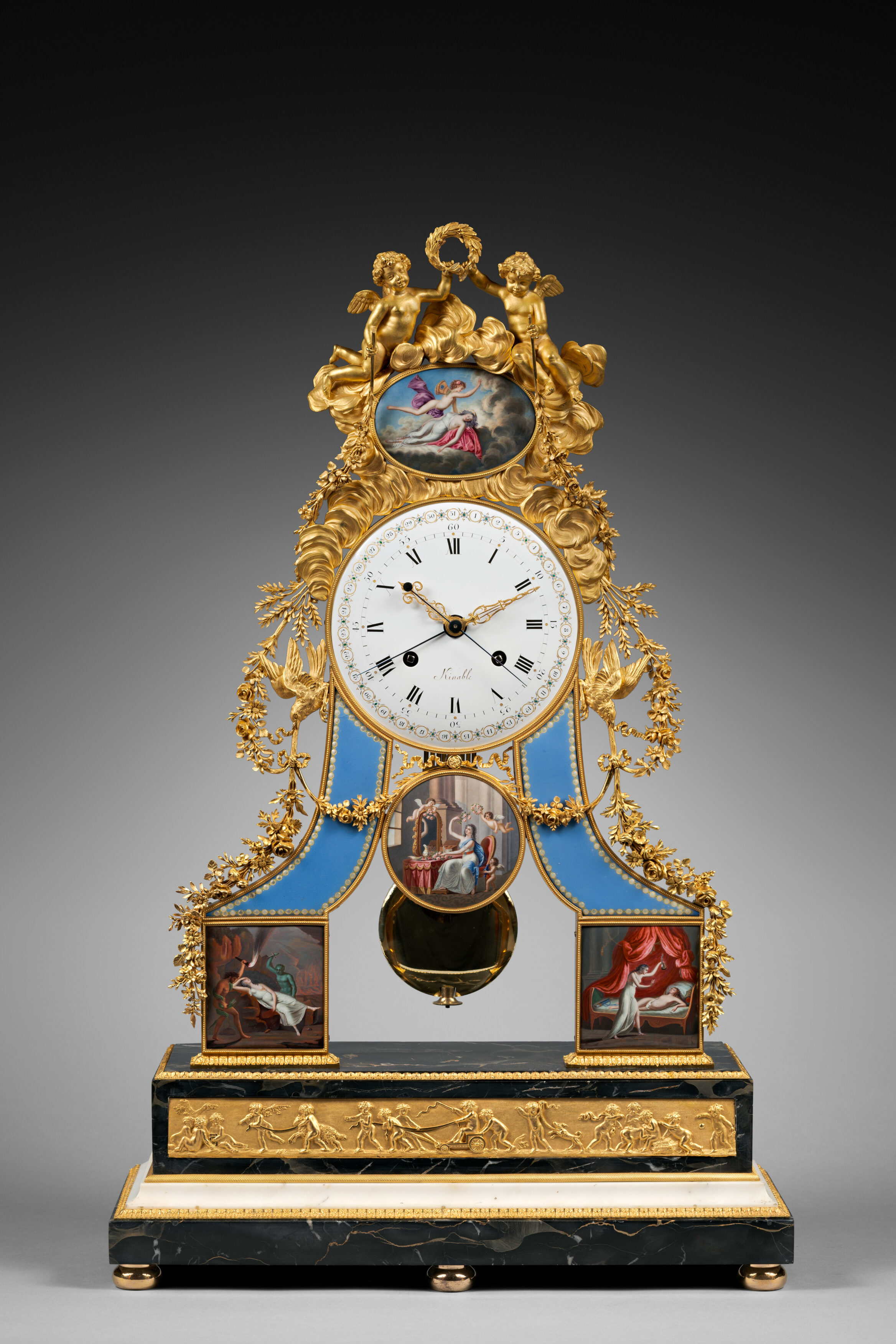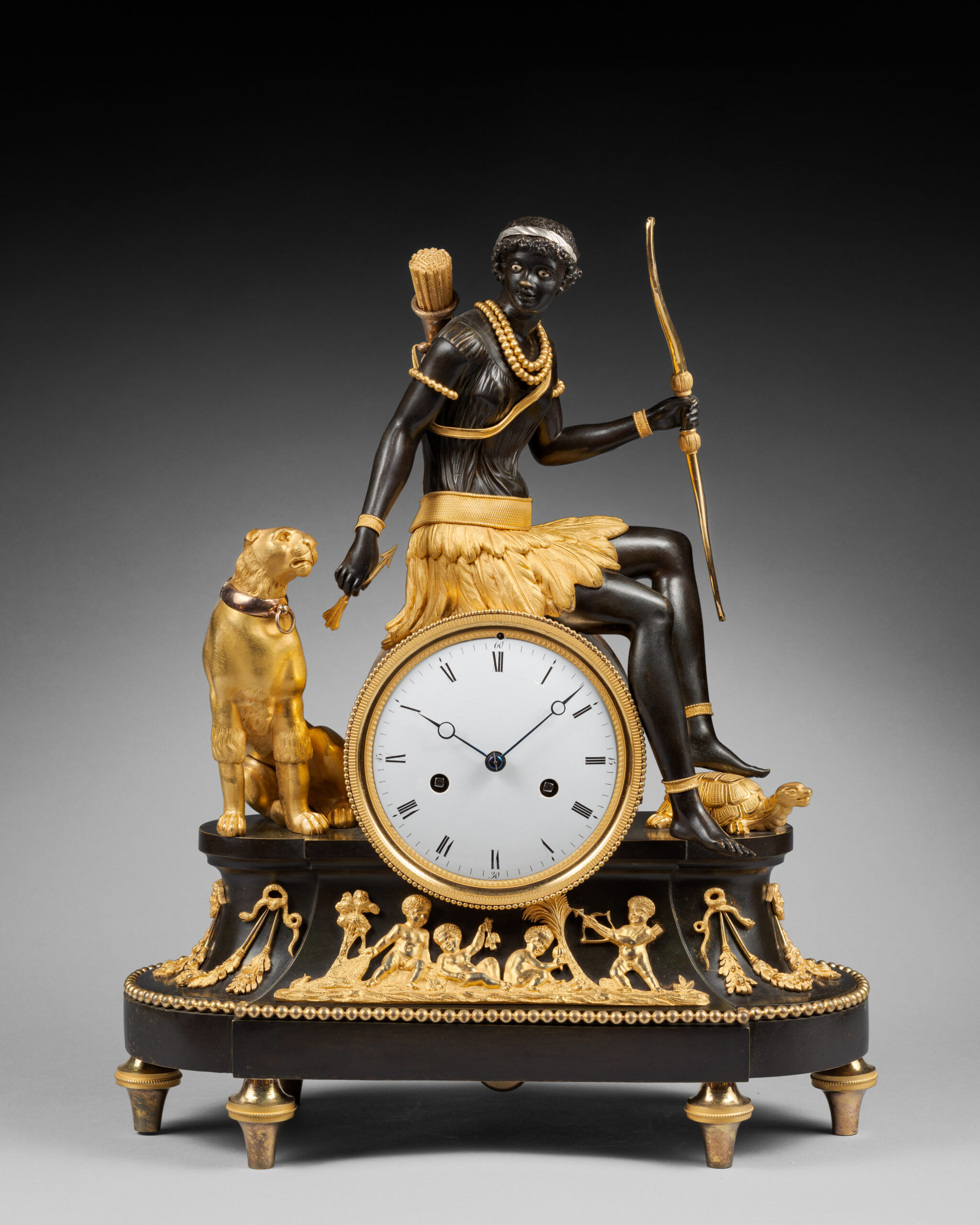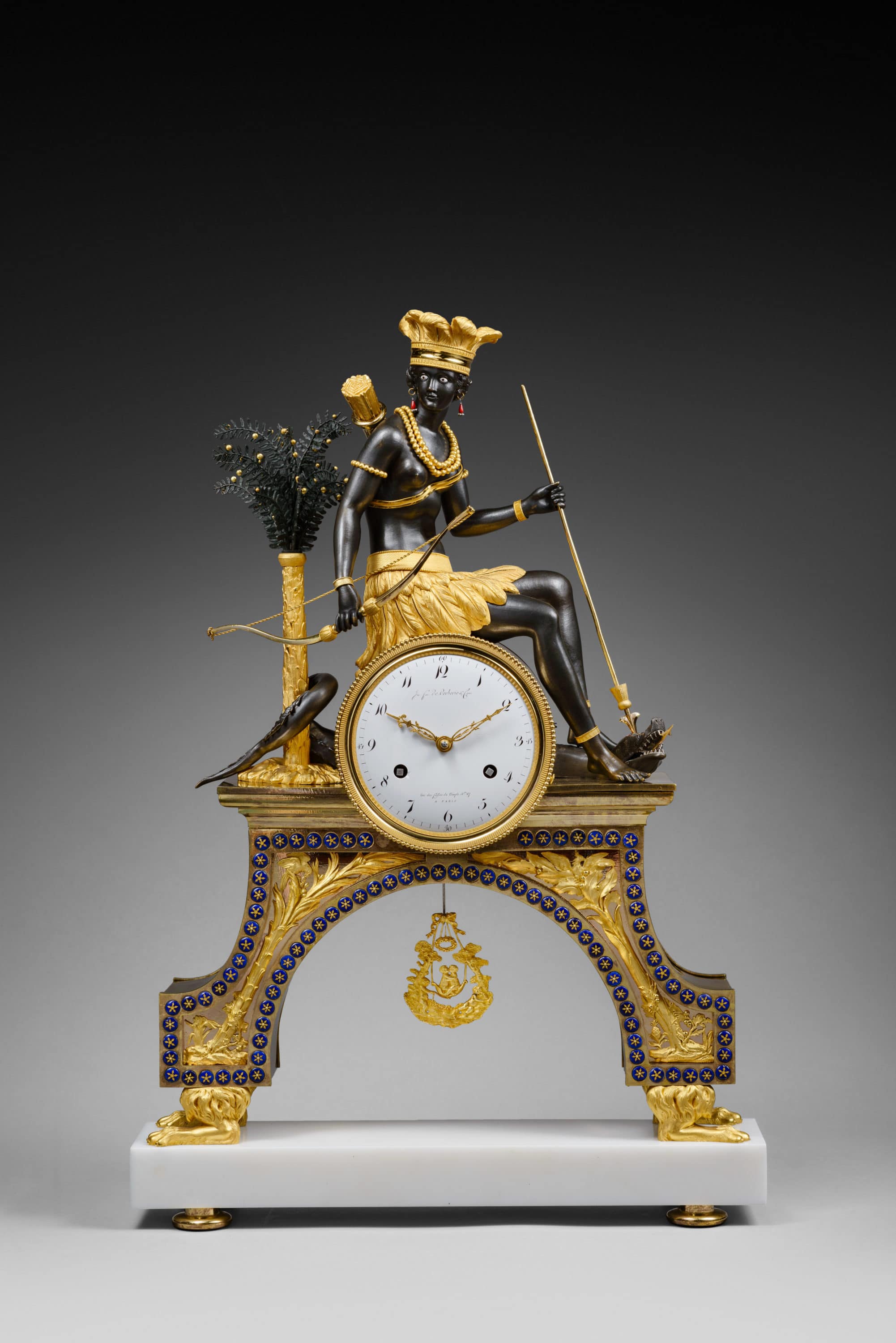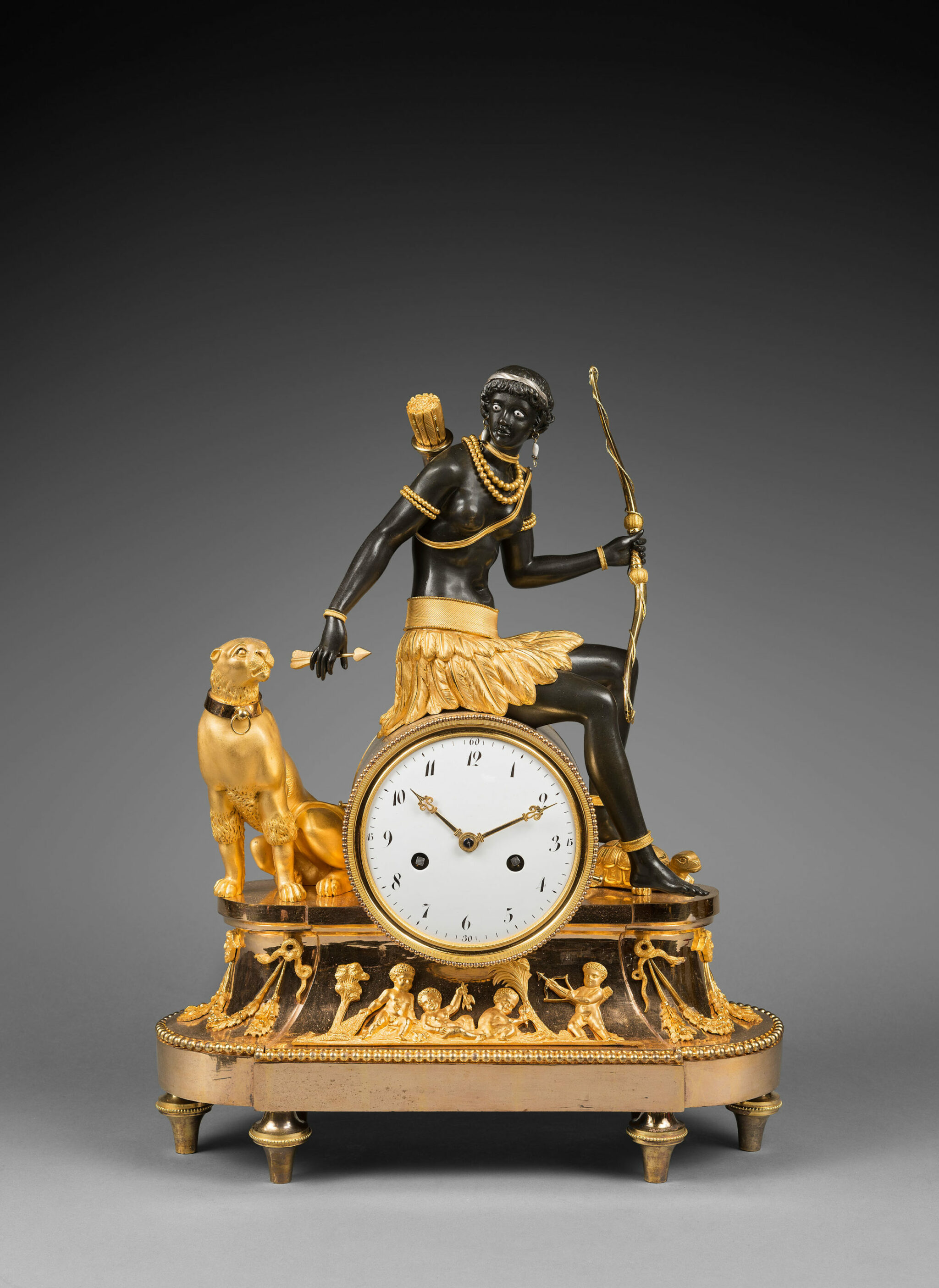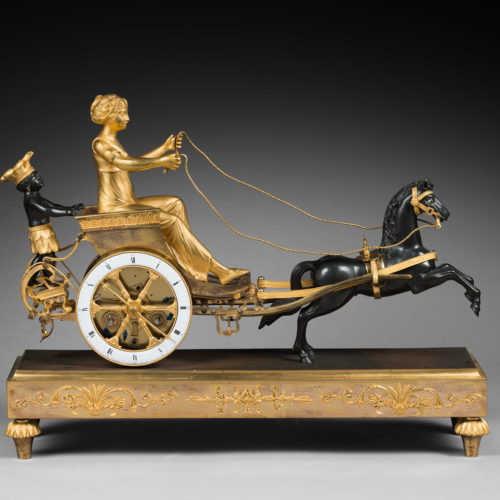Rare Chased, Patinated and Gilt Bronze Mantel Clock
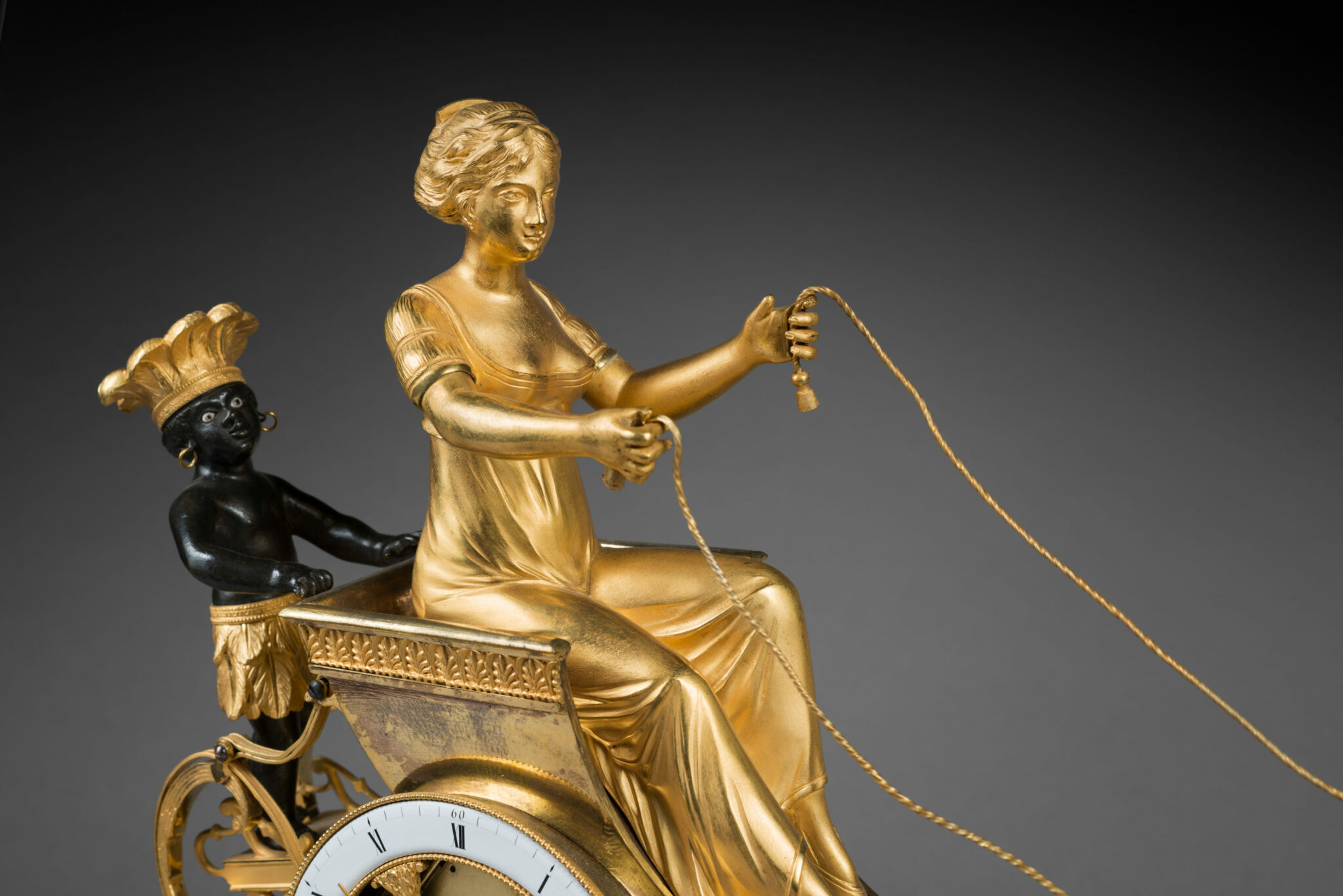
Attributed to Jean-Simon Deverberie
Paris, Directoire period, circa 1795-1800
The enamel ring dial indicates the Roman numeral hours and the minute graduations by means of two blued steel hands. Revealing the skeleton movement, it forms the wheel of a small chariot driven by a young woman modelled in chased and gilt bronze. Dressed in an Empire-waist dress, her hair tied up in a bun, she holds a whip in one hand and in the other the reins of the spirited, patinated bronze horse that is harnessed to the chariot. Behind the young woman stands a young black boy with enamel eyes, wearing a feather headdress and loincloth. He adds an exotic touch to the composition. The moulded a rectangular base is adorned with foliate motifs, scrolls and palmettes; the four feet are decorated with foliate motifs.
Discover our entire collection of antique mantel clocks for sale online or at the gallery.
La Pendulerie is the specialist in fine and rare antique clocks, based in Paris.
In the late 18th century, the philosophical writings of Jean-Jacques Rousseau extolled the virtues of a return to Nature via the myth of the “noble savage”. Due to their influence exoticism became fashionable in contemporary literature. Bernardin de Saint Pierre’s great success “Paul et Virginie”, published in 1788, Daniel Defoe’s famous “Robinson Crusoe”, Marmontel’s novel “Les Incas”, published during the American Revolutionary War, and Chateaubriand’s “Atala”, published in 1801, all profoundly changed Europeans’ view of other civilisations. This literary movement created a romantic vision of a sort of pagan Garden of Eden, renewed and regenerated by Christianity. As often happened in the French decorative arts, this was to have an effect on many artistic creations, particularly clocks and lighting instruments. This is the context within which the present clock was created by bronze caster Jean-Simon Deverberie in the late 18th century. It is particularly interesting because it is related to two types of clock, both extremely sought-after by knowledgeable horological collectors at the time; the “pendule au nègre” and the “pendule au char”.
Very few similar clocks are known; most date from a later period. One such example is illustrated in Tardy, La pendule française, du Louis XVI à nos jours, Paris, 1975, p. 377; a second clock is in the François Duesberg Museum in Mons (see Musée François Duesberg, Arts décoratifs 1775-1825, Bruxelles, 2004, p. 54); a third example is in the collection of the Princes of Hessen in the Fasanerie Palace in Fulda (illustrated in the exhibition catalogue Gehäuse der Zeit, 2002, p. 93).
Jean-Simon Deverberie (1764 - 1824)
Jean-Simon Deverberie was one of the most important Parisian bronziers of the late 18th century and the early decades of the following century. Deverberie, who was married to Marie-Louise Veron, appears to have specialized at first in making clocks and candelabra that were adorned with exotic figures, and particularly African figures. Around 1800 he registered several preparatory designs for “au nègre” clocks, including the “Africa”, “America”, and “Indian Man and Woman” models (the drawings for which are today preserved in the Cabinet des Estampes in the Bibliothèque nationale in Paris). He opened a workshop in the rue Barbette around 1800, in the rue du Temple around 1804, and in the rue des Fossés du Temple between 1812 and 1820.
